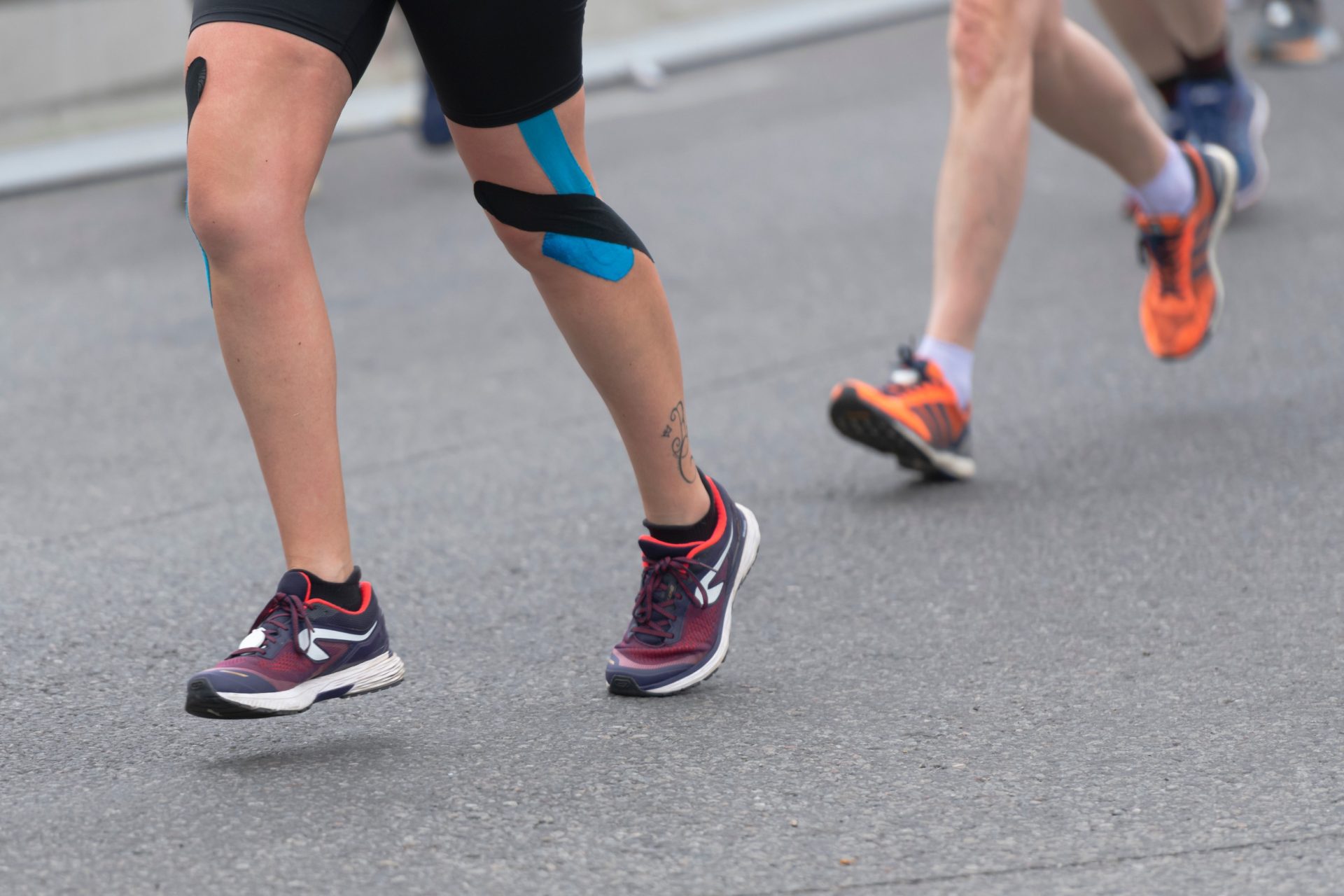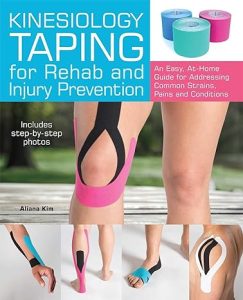Kinesiology tape has become a popular choice for athletes and physical therapists alike as an effective way to provide support, reduce inflammation, and promote healing.
In particular, hamstring kinesiology tape has gained widespread attention due to its ability to improve the range of motion in the lower body while providing stability during movement.
Understanding how this type of supportive taping works is essential for those looking to make use of it in their own treatment plans or training regimens.
This article will explore the science behind hamstring kinesiology tape and discuss methods for applying it properly.
This is Why Having Quality Hamstring Kinesiology Tape is Important
Hamstring kinesiology tape is a type of elastic therapeutic tape designed to provide support and stability to the hamstrings and reduce inflammation.
It works by creating a lifting effect on the skin, which in turn reduces pressure on the underlying tissue. This can help improve circulation and reduce swelling around injured areas, allowing for better flexibility and range of motion.
Kinesiology tape can also increase proprioception (the ability to sense where one’s body parts are in space) during movement, consequently helping athletes perform more efficiently without fear of further injury.
Best Value Options Available Online:
1. 16ft Water Resistant KT
2. 10” Precut KT Strips
3. KT Multi-Size Pack
KT Tape Hamstring Methods
Hamstring kinesiology taping is not a one-size-fits-all solution. Different injuries require different methods for support and stabilization, as well as different lengths of tape.
For example, you can try strapping the hamstring with KT tape, a full-length strip applied along the entire muscle group from just above the knee to just below the buttocks. This type of application helps reduce swelling and inflammation while providing stability during movement.
For more acute injuries like pulled hamstrings or tendinitis, shorter strips can apply pressure directly over the affected area. This method provides targeted relief by increasing circulation to the injury site and promoting healing.
Additionally, these shorter strips can be used to provide extra support during physical activity by adding additional pressure over the area.
Best Book Available to Learn Kinesiology Taping Techniques:
Kinesiology Taping for Rehab and Injury Prevention: An Easy, At-Home Guide for Overcoming Common Strains, Pains and Conditions
Where to Find Quality Hamstring Kinesio Tape
There are many types of kinesiology tape to choose from, and it is important to purchase quality products for the tape to work effectively.
We recommend you purchase your hamstring strain kinesio tape from a reputable supplier or manufacturer such as RockTape, K Tape Pro, KT Tape Pro+, or Physix Gear Sport. All of these brands offer superior adhesion and durability so you can be confident that your taping job will last throughout your activities.
You can usually find these and other quality tapes at health and wellness retailers, like Walgreens or CVS, or online stores like Amazon.
How to Apply KT Tape for a Pulled Hamstring
When it comes to taping for a pulled hamstring, the goal is to provide support and stability without restricting the range of motion. Here’s a step-by-step guide on how to do it:
- Start by cleaning your skin with rubbing alcohol and drying it completely before applying the tape. This will ensure that the adhesive adheres properly.
- Next, cut strips of kinesiology tape that are about two inches wide and long enough to cover both sides of your hamstring.
- Once the strips are cut, begin to apply them in a figure 8 pattern, starting at the middle of your thigh and working down toward the knee. Make sure that each strip overlaps about half an inch with the previous one so that there is enough support.
- Finally, press firmly on each strip after it has been applied to ensure proper adhesion. This will help keep the tape in place during physical activity and provide maximum support for your hamstring muscles.
Can Applying Hamstring Strain KT Tape Truly Help?
Yes. Research has shown that the application of k tape for hamstring strain can reduce pain, improve range of motion, and promote healing. Studies have also found that it may even be more effective than traditional taping methods in terms of providing stability during movement.
How Hamstring KT Methods Were Invented
The original idea behind the use of kinesiology tape was developed by a Japanese chiropractor, Dr. Kenzo Kase, in 1979. He noticed that when he applied traditional athletic tape to his patients’ bodies, it would often inhibit their range of motion and limit their ability to perform certain activities.
To address this issue, Dr. Kase created a unique stretchable adhesive material that could be used in place of traditional athletic tape while still providing the necessary support for injured areas. This invention eventually became known as kinesiology tape or “KT Tape.”
Kinesiology Taping for Hamstrings is Not Just for Pro Athletes
Kinesiology taping is an effective and safe technique for relieving pain, reducing swelling, improving posture, and providing support to the muscles of the lower body. It’s often used by professional athletes to aid in recovery from injury or as a preventative measure against future injuries.
However, it can also be beneficial for those who are not elite athletes. Kinesiology tape has been found to improve performance during exercise and reduce muscle fatigue in recreational exercisers as well as those who just want to go about their daily routine without pain.
What to Do If You Think You Have a Hamstring Injury
Common signs of a hamstring injury include pain during movement, swelling around the affected area, difficulty moving or putting weight on the leg, and reduced range of motion.
If you think you have sustained a hamstring injury, it’s important to seek medical attention immediately to get an accurate diagnosis and treatment plan instead of first trying a KT tape hamstring self application.
Should You KT Tape Hamstring Muscles Even if You Don’t Have an Injury?
Kinesiology tape is not only used to treat existing injuries but it can also be used as a preventative measure. For those with weak hamstrings or a history of strains, kinesiology tape can help provide support and stability during exercise.
This type of taping has been shown to increase proprioception (awareness of body position and movement) in the lower body muscles supporting balance and agility when exercising.
Applying muscle tape for hamstring use before an activity may reduce the risk of injury by providing additional stability while still allowing for the full range of motion.
Zoppler is reader supported and may earn affiliate commissions from links on this page. We support and believe in all the products and services we promote and are affiliated with.
















